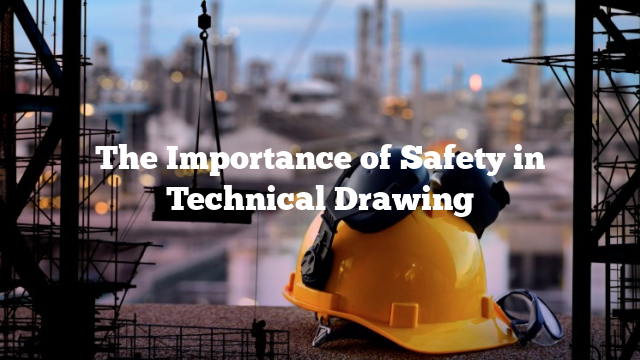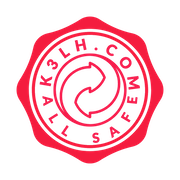\” and summarize the main points of the post.
Introduction:
Drawing is a fun and creative activity that helps us express our emotions and ideas. However, when it comes to safety related drawing, it becomes more than just a hobby. Safety related drawing is a crucial part of any workplace or industry that deals with hazardous materials, equipment or situations. The main aim of safety related drawing is to communicate important safety information to employees, visitors and emergency responders in a clear and concise manner. But, what are the pain points related to safety related drawing? How can we ensure that our safety drawings are effective? This article will answer these questions and provide you with the main points related to safety related drawing and related keywords.
What is Safety Related Drawing?
Safety related drawing is the process of creating visual representations of safety information, such as warning signs, symbols, diagrams, and instructions. Safety drawings can be found in various industries, including construction, manufacturing, chemical, and healthcare, among others. These drawings are often used to inform employees and visitors about potential hazards and how to avoid them, as well as emergency procedures in case of an accident or disaster.
Why is Safety Related Drawing Important?
Safety related drawing is essential for maintaining a safe workplace environment and preventing incidents and accidents. Safety drawings can help prevent injuries, illnesses, and even fatalities by informing employees and visitors about potential hazards and how to avoid them. They also help emergency responders to quickly and accurately identify the location of hazards and respond accordingly.
Facts about Safety Related Drawing:
– Safety drawings can be found in various forms, such as safety signs, labels, placards, diagrams, and instructions.
– Safety drawings are regulated by various authorities, such as OSHA, ANSI, and NFPA.
– Safety drawings should be clearly visible, understandable, and recognizable.
– Safety drawings should be updated regularly to reflect changes in the workplace environment.
– Safety drawings should be reviewed and approved by experts to ensure their accuracy and effectiveness.
Listicle of Safety Related Drawing:
1. Use standard safety symbols and colors to ensure consistency and clarity.
2. Avoid using text-heavy instructions and use simple and concise language.
3. Use diagrams and illustrations to supplement your safety drawings.
4. Use high-quality materials and printing techniques to ensure durability and legibility.
5. Test your safety drawings with a sample audience to ensure their effectiveness.
Tutorial of Safety Related Drawing:
Creating effective safety drawings can be a challenging task, but following these steps can help you create clear and concise safety drawings:
1. Identify the hazards: Before you start creating your safety drawings, identify the potential hazards in your workplace.
2. Choose the appropriate format: Decide which format best suits your safety information, such as signs, labels, diagrams, or instructions.
3. Use standard safety symbols and colors: Use recognized safety symbols and colors to ensure consistency and clarity.
4. Use simple language: Use simple and concise language to convey your safety information.
5. Use illustrations and diagrams: Use illustrations and diagrams to supplement your safety drawings.
6. Test your safety drawings: Test your safety drawings with a sample audience to ensure their effectiveness.
Tips of Safety Related Drawing:
1. Use high-contrast colors to ensure visibility.
2. Use large fonts and clear lettering to ensure legibility.
3. Use appropriate spacing and layout to ensure clarity.
4. Use symbols and images that are easily recognizable.
5. Use different colors and shapes to distinguish between different levels of hazards.
Question and Answer of Safety Related Drawing:
Q: What are the common types of safety drawings?
A: The common types of safety drawings are safety signs, labels, placards, diagrams, and instructions.
Q: How often should safety drawings be updated?
A: Safety drawings should be updated regularly to reflect changes in the workplace environment.
Q: What are the regulations that govern safety drawings?
A: Safety drawings are regulated by various authorities, such as OSHA, ANSI, and NFPA.
Q: How can I ensure that my safety drawings are effective?
A: You can ensure that your safety drawings are effective by using standard symbols and colors, using simple language, using illustrations and diagrams, and testing them with a sample audience.
Conclusion of Safety Related Drawing:
Safety related drawing is a crucial part of any workplace or industry that deals with hazardous materials, equipment or situations. Effective safety drawings can help prevent injuries, illnesses, and even fatalities by informing employees and visitors about potential hazards and how to avoid them, as well as emergency procedures in case of an accident or disaster. By following the tips and tutorials provided in this article, you can create clear and concise safety drawings that effectively communicate important safety information.
Recommendations:
- Safety Quotes Images A safety leader will go above and beyond to make safety a priorityfor themselves and for those around them. Safety images photos unsafe pictures and funny fails. Safety Doesn T…
- Safety Quotes Funny Try being a little creative and your message gets across. A big thank you to all of our readers who have contributed some excellent. Funny Workplace Safety Pictures Safety Slogans…
- Car Safety Inspection Checklist Checklist for safety inspection fill online printable fillable. Present the certificate of inspection marked. Vehicle Safety Inspection Checklist Form Vehicle Vehicle You will know whether your vehicle is due for…
- Safety Quotes For Workplace Display them around your workplace or add them to internal newsletters. Find the best catchy competition winning heath and safety slogans and safety messages for your workplace 2020 quotable quote.…
- Funny Safety Quotes For Work Im sure youll remember at least a few of these safety quotes. Im not going to lie. Funny Safety Quotes Safety Toolbox Talks Meeting Topics If you get killed at…
- Safety Quotes For The Workplace Display them around your workplace or add them to internal newsletters. Apr 25 2019 explore sotorioss board safety quotes for workplace on pinterest. Safety Quotes For The Workplace Safety In…
- Posters Funny Safety Slogans 500 of the best workplace health and safety slogans. As described in our earlier post on safety slogans safety posters can be installed throughout the organization to educate employees to…
- Workplace Safety Signs And Symbols, Why so important? Proper workplace safety signs and symbols always place in a construction site, mining site, oil and gas site or hospital and your workplace.
- Safety Quotes Pictures A group of wonderfully cared for confident individuals will generate great ideas. You are looking for the safety quotes which helps us to free from harm or danger. Safety Doesn…
- Weekly Safety Inspection Checklist Are all employees trained in hazardous substances safety. Access all your safety inspection checklists and forms from your mobile and never worry about losing a piece of paper again. Ultimate…
- Safety First Clip Art We summarised more than 50 safety first clip art for your safety campaigns. Download it.
- Huge Safety Slogans Complete List Made Your Safety… Browse through the safety slogans in 2022 suggestions below. The safety slogans is one of Safety Communication method which successful of safety campaign was measured. So Safety Slogans is so…
- Safety First Baby Gate More buying choices 1431 7 used new offers summer top of stairs simple to secure metal gate white 29 42 inch wide. The safety 1 st lift lock swing gate…
- Health And Safety Inspection Report Template Use for office health and safety audits. Add a badge to your website or intranet so your workers can quickly find answers to their health and safety questions. Safety Report…
- Industrial Safety Posters Free Downloads Injury facts 2014 edition. Great quality best price. Workplace Safety Posters Downloadable And Printable Alsco Post bright safety slogan signs and encourage safety in your facility. Industrial safety posters free…
- Safety Committee Meeting Topics Designate one member to ensure each person is being treated with respect and that proceedings remain on course. These 5 minute toolbox talks are easy to use. 12 Safety Meeting…
- Safety Slogans For September Using a new iphone app a team of social psychology experts has analysed every meaningless aphorism and every condescending platitude ever displayed in the workplace to come up with a…
- Safety Slogans Funny Safety Quotes Safety slogans from russell t. 167 catchy and funny safety slogans for workplaces 2020 find the best catchy safety slogans for your workplace stop press. Posters Funny Safety Slogans K3lh…
- Vehicle Safety Inspection Checklist When do i need a vehicle inspection checklist template. Missouris motor vehicle safety inspection program requires each vehicle for professional or personal use to go through a series of checks…
- Safety Poster Ideas Staying safe is a little easier when there are reminders posted nearby. Heat stress infoposter safety poster. Safety Posters Archives Safety Talk Ideas Free safety talks free workplace safety posters…
- Vehicle Safety Inspection Checklist Template Ontario Discover ideas about vehicle inspection. A vehicle inspection checklist is used to evaluate a vehicles working condition. 002 Vehicle Safety Inspection Checklist Template Ideas Magnificent Browse this free collection of…
- Safety Posters Ideas Safety awareness products safety awareness ideas safety signs safety posters safety decals industrial safety employee safety programs marketing a safety program safety placards custom posters custom decals how to create…
- Site Safety Inspection Checklist They will give you some indication of where you should begin action. Weekly site safety inspection checklist. Jobsite Safety Inspection Checklist Mcaa Place next to each item that is satisfactoryplace…
- Safety Inspection Report Example Page 1 of 3. Formal inspections can take different forms and you and your representatives will need to agree the best methods for your workplace. Safety Report Templates 16 Pdf…
- Best Safety Slogans For The Workplace A harness is better than a hearse. Hence they can be very effective for safety awareness. Safety Slogans And Sayings Creative Catchy And Funny Ideas They should be a conversation…
- Safety Slogans Posters The ripple effect of a serious injury or incident. A clean floor everyday keeps lost days away. Safety Slogans Stickers Safety Poster Thiruvagoundanur 27 mar 2019 explore abernathy9155s board safety…
- Osha Safety Meeting Topics Oshas safety and health topics pages provide regulatory and enforcement information hazard identification and controls as well as best practices and other resources to assist employers workers and safety and…
- Catchy Safety Slogans For The Workplace In this post we are going to share with you a list of 57 funny safety slogans. Here are best safety slogans for workplace. 201 Catchy Safety Slogans For The…
- The Best 20+ Safety Signs Workplace For Your Safety… When must safety signs workplace be used. Our most popular example of safety signs for the workplace are available with english spanish or multilingual language options. Workplace Safety Signs Choose…
- Health And Safety Topics Occupational health safety is the industry leading news magazine enewsletter and website for occupational health and safety professionals focusing on problem solving solutions latest news. Health safety committee member health…
Advertisement
Scroll to Continue With Content




